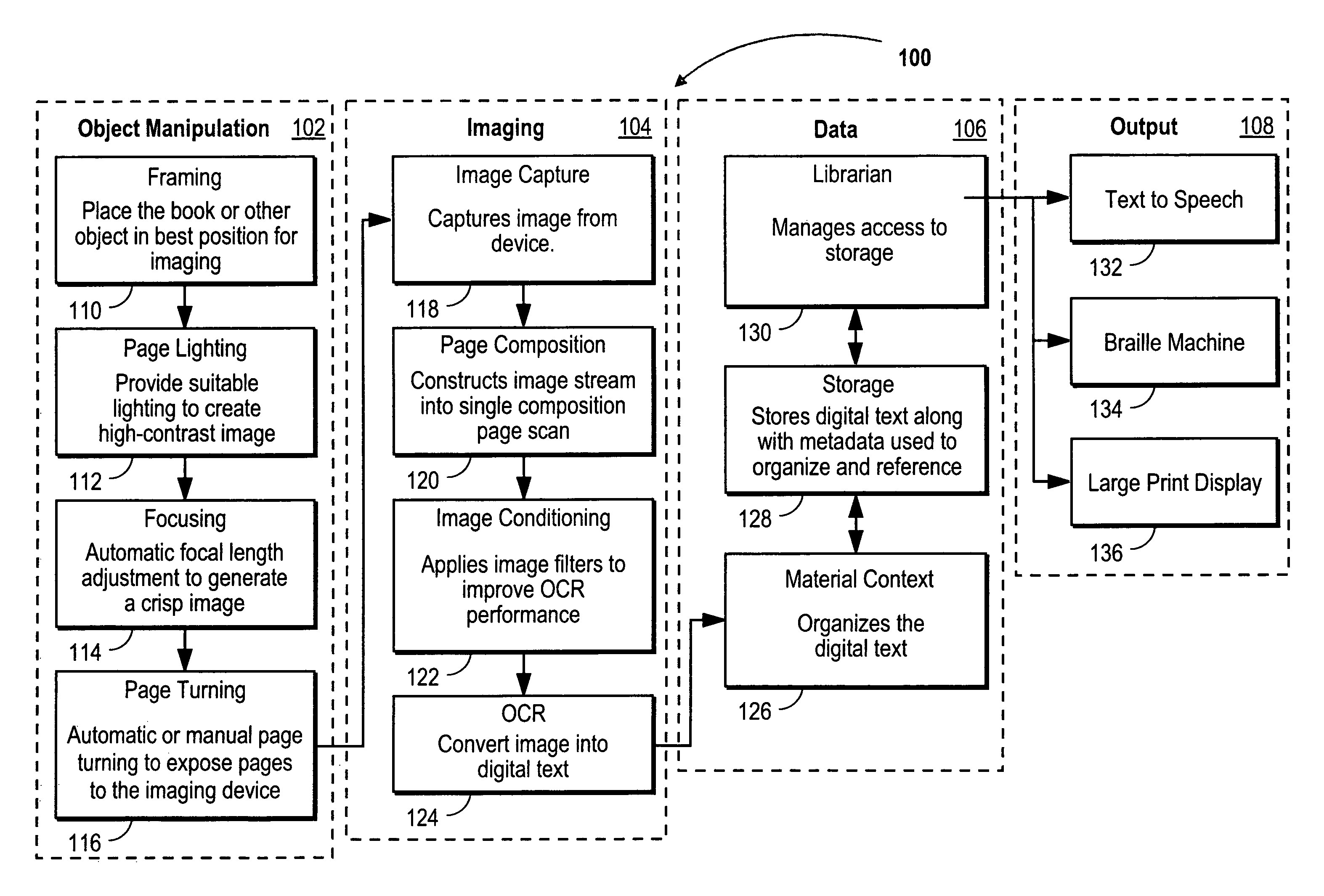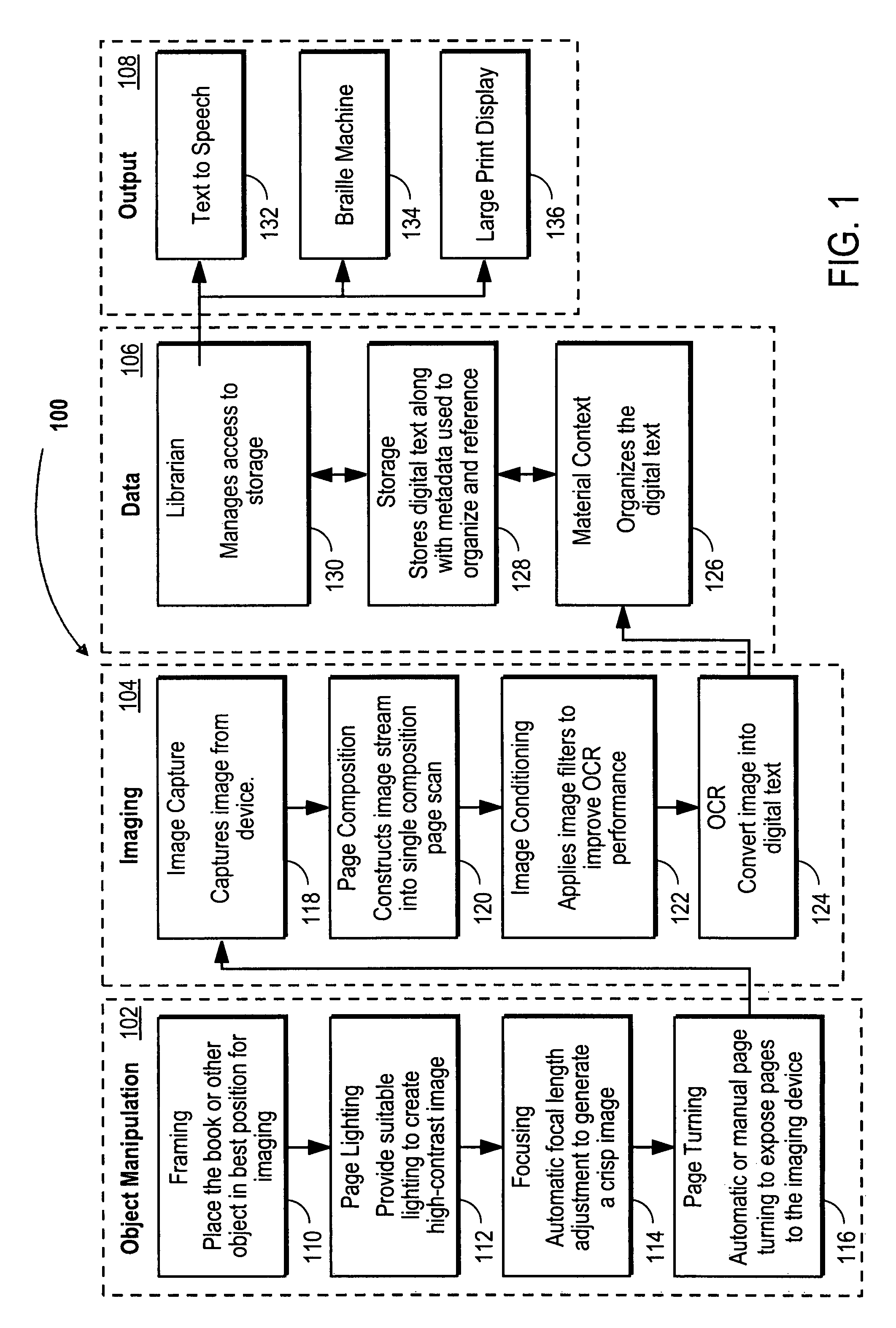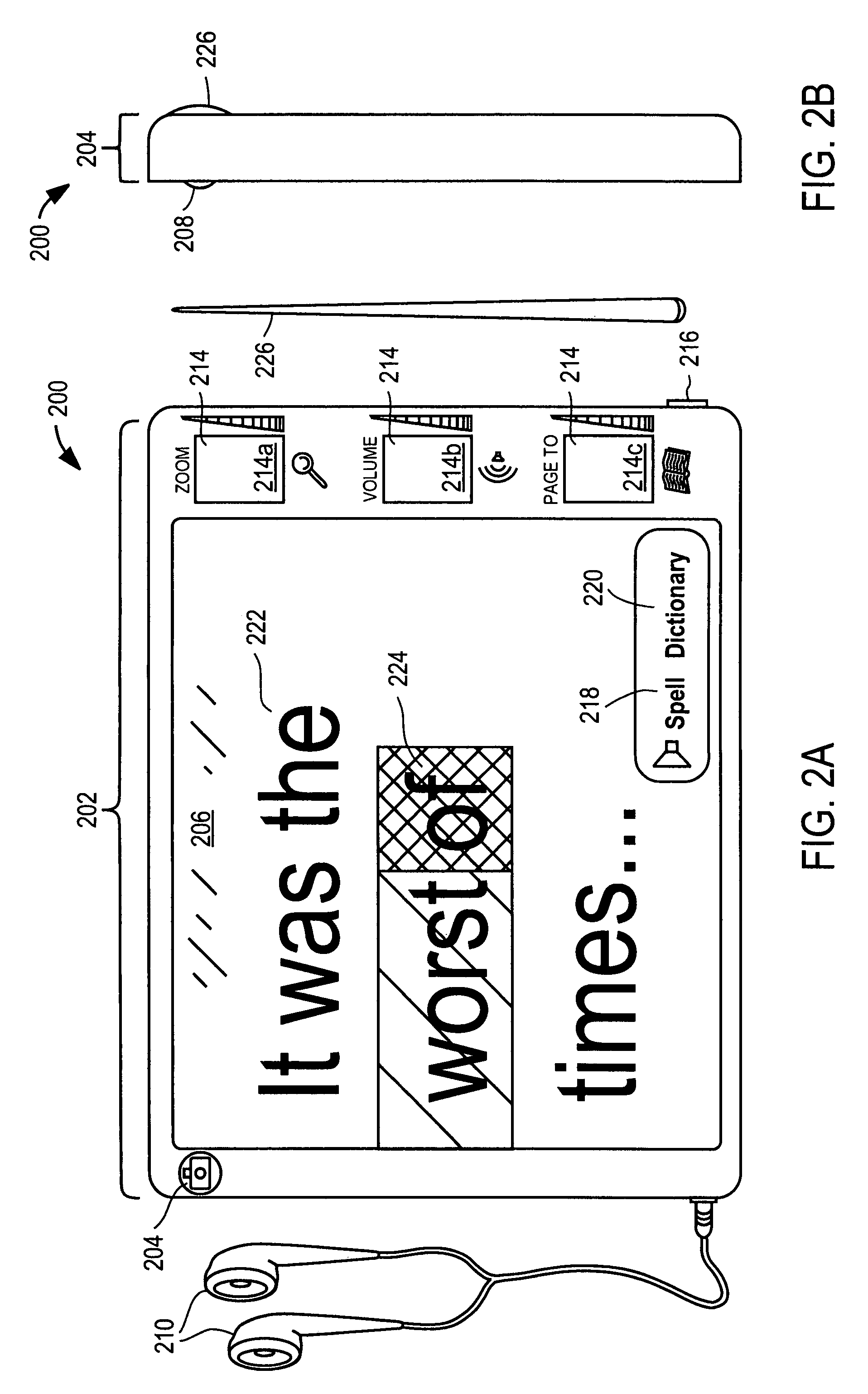Capturing and presenting text during optical character recognition
a technology of optical character recognition and text, applied in the field of adaptation technology, can solve the problems of unreported full reversal treatment, difficult reading, and inability to fully reverse the condition, and achieve automatic adjustment of focal length, enhance contrast, and enhance the plurality of images captured
- Summary
- Abstract
- Description
- Claims
- Application Information
AI Technical Summary
Benefits of technology
Problems solved by technology
Method used
Image
Examples
Embodiment Construction
This disclosure describes methods, systems, apparatuses, and graphical user interfaces for capturing and presenting text using auditory signals. Reference are made to certain embodiments of the invention, examples of which are illustrated in the accompanying drawings. While the invention is described in conjunction with the embodiments, it should be understood that it is not intended to limit the invention to these particular embodiments alone. On the contrary, the invention is intended to cover alternatives, modifications and equivalents that are within the spirit and scope of the invention as defined by the appended claims
Moreover, in the following description, numerous specific details are set forth to provide a thorough understanding of the present invention. It will be apparent to one of ordinary skill in the art, however, that the invention may be practiced without these particular details. In other instances, methods, procedures, and components that are well-known to those of...
PUM
 Login to View More
Login to View More Abstract
Description
Claims
Application Information
 Login to View More
Login to View More - R&D
- Intellectual Property
- Life Sciences
- Materials
- Tech Scout
- Unparalleled Data Quality
- Higher Quality Content
- 60% Fewer Hallucinations
Browse by: Latest US Patents, China's latest patents, Technical Efficacy Thesaurus, Application Domain, Technology Topic, Popular Technical Reports.
© 2025 PatSnap. All rights reserved.Legal|Privacy policy|Modern Slavery Act Transparency Statement|Sitemap|About US| Contact US: help@patsnap.com



